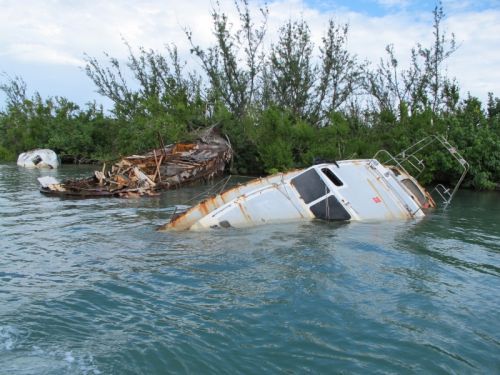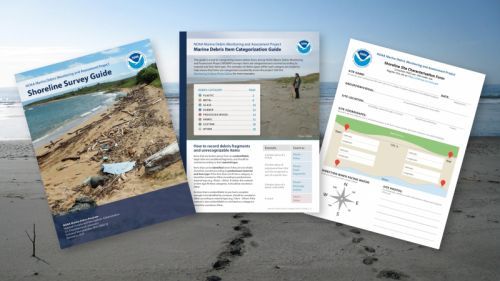Fiscal Year 2023: Researching, Preventing, and Reducing Marine Debris on our Shores
The NOAA Marine Debris Program (MDP) leads national efforts to research, prevent, and reduce the adverse impacts of marine debris on the United States economy, the marine environment, and navigation safety.
The MDP team is positioned across the country to support the Great Lakes and coastal environments on marine debris projects and action planning in partnership with state and local agencies, tribal partners, nongovernmental organizations, academia, and industry experts. The program spearheads national research efforts, leads interagency coordination on marine debris, responds to severe weather events, and supports marine debris removal and prevention efforts.
Supporting Transformational Marine Debris Removal Projects through the Bipartisan Infrastructure Law
In 2022 and 2023, the MDP provided approximately $67 million in federal funds to 13 transformational projects to remove marine debris. Funding for this opportunity was provided through the Bipartisan Infrastructure Law and leveraged funds from the Inflation Reduction Act. These high-impact projects will increase resilience and restore habitat by removing the largest and most damaging debris and preventing its reaccumulation in the environment.
The MDP is also supporting marine debris removal in the Papahānaumokuākea Marine National Monument through a five-year, $5.8 million award through the Bipartisan Infrastructure Law to the National Fish and Wildlife Foundation. This work is allowing the subgrantee, the Papahānaumokuākea Marine Debris Project, to continue and scale up NOAA’s legacy of marine debris removal in the monument and build capacity. During two missions in 2023, the Papahānaumokuākea Marine Debris Project removed over 212,000 pounds of marine debris from shallow coral reefs and shorelines of the islands and atolls within the monument.
Expanding Storm Preparedness Across U.S. States and Territories
During disasters, large amounts of debris can enter waterways all at once. Disaster-related debris can include abandoned and derelict vessels, construction debris, and household hazardous wastes, all of which can be a danger to boat traffic, damage habitat, and even release pollution. The MDP works with coastal states and territories to develop emergency response guides that improve preparedness for responding to marine debris after disasters. These guides outline existing response structures at the local, state, territorial, and federal levels and include an overview of permitting and compliance requirements in order to facilitate a coordinated and timely response.
In fiscal year 2023, the MDP published three new emergency response guides for New York, Puerto Rico, and the Commonwealth of the Northern Mariana Islands. The Commonwealth of the Northern Mariana Island guide was published the same month that Typhoon Mawar caused significant damage on the island of Rota. It is the first guide created for the Pacific Region and was developed with an unprecedented level of community participation. The MDP also held a hands-on exercise in Saipan for community partners to become familiar with the guide and its tools.
New Tools for Collecting and Exploring Marine Debris Data
The Marine Debris Monitoring and Assessment Project (MDMAP) is NOAA’s flagship marine debris initiative that engages partner organizations and volunteers across the nation and around the world to survey and record the amount and types of marine debris on shorelines. In fiscal year 2023, the MDP released an updated toolbox of resources to support volunteers, including training videos and resources, data sheets, a photo guide for identifying debris items, and education materials to incorporate monitoring in the classroom. The program also updated the MDMAP Database with new interactive data visualizations that allow for exploring results and see the amounts and kinds of debris reported. MDMAP is a widely applicable, simple, and inexpensive protocol to monitor for marine debris in the field, and these expanded and updated resources increase its usability, helping participants work together to answer questions about marine debris.
 An official website of the United States government.
An official website of the United States government. 


